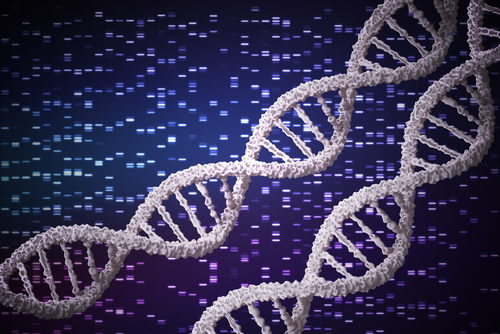Carriers of CHRFAM7A gene Less Responsive to Cholinesterase Inhibitors, Study Suggests
Written by |

Alzheimer’s disease patients carrying a gene found only in humans, called CHRFAM7A, are less responsive to cholinesterase inhibitors, a new study reports. These findings may explain why some therapeutic benefits seen in animal studies have failed to translate to patients.
Kinga Szigeti, MD, PhD, director of the University at Buffalo’s (UB) Alzheimer’s Disease and Memory Disorders Center, shared the results in a presentation titled, “Cholinesterase inhibitors have a disease modifying effect in AD relative to CHRFAM7A genotype suggesting an a7NAChR dependent mechanism” during the 2019 Alzheimer’s Association International Conference (AAIC), July 26-30 in Los Angeles.
“This research provides proof of concept that since different mechanisms are at work in Alzheimer’s in different patients, we need to develop more personalized treatments that will prove more effective in individuals,” Szigeti, who is also an associate professor of neurology in the Jacobs School of Medicine and Biomedical Sciences at UB, said in a press release.
Preclinical studies have suggested that a cellular receptor, called a7 nicotinic acetylcholine receptor (a7 nAChR), plays a key role in Alzheimer’s. The receptor, found in brain regions controlling cognition and memory, is activated by the neurotransmitter (a chemical messenger) acetylcholine, which is involved in memory and learning.
In Alzheimer’s, beta-amyloid has a high affinity to the receptor, which disrupts its activation by acetylcholine.
Based on this knowledge, therapies that target and activate the a7 nAChR receptor, called agonists, were thought to have a therapeutic benefit in Alzheimer’s disease. However, while a7 nAChR agonists have shown good results in preclinical studies, their translation into humans has failed to show therapeutic effects.
The CHRFAM7A gene carries the information to make the a7 nAChR receptor. This gene is called a fusion gene because it is the result of the partial duplication of the CHRNA7 gene fused together with another gene, FAM7A, which codes for an enzyme.
This duplication is human specific, occurring neither in primates nor in rodents, and is present in two forms: one that is functional and gives rise to a protein, and one that is not. This means that some people carry a functional gene (called carriers) while others do not (called non-carriers).
“This splits the population 1-to-3 between non-carriers and carriers,” Szigeti said.
Researchers analyzed how the presence of a functional CHRFAM7A gene affected Alzheimer’s patients’ response to cholinesterase inhibitors: therapies that prevent an enzyme, called acetylcholinesterase, from breaking down acetylcholine, increasing acetylcholine levels in the brain. This helps maintain communications between nerve cells.
Three of the four medications approved for Alzheimer’s disease are all cholinesterase inhibitors and include Aricept (donepezil), Exelon (rivastigmine), and Razadyne (galantamine).
Researchers analyzed data from patients who participated in the Texas Alzheimer Research and Care Consortium, a 10-year, multi-center study of mild to moderate Alzheimer’s patients who were followed for seven years.
“With this study, we compared the effect of cholinesterase inhibitors in patients who did or didn’t carry this gene,” Szigeti said.
Their analysis included 261 CHRFAM7A carriers (75.5%) and 85 non-carriers (24.5%). The results showed that Alzheimer’s patients who did not carry the CHRFAM7A gene benefited from cholinesterase inhibitors over the 7-year observation period irrespective of monotherapy or combination with Namenda (memantine), one of the four FDA medications approved for Alzheimer’s.
“Since this human fusion gene was not present in the animal models and screening systems used to identify drugs, 75% of Alzheimer’s patients who do carry this gene are less likely to benefit and therefore are at a disadvantage,” Szigeti said. “This may account for the translational gap,” she said, as “people who don’t have the gene respond better to the drugs available now.”
Researchers cautioned, however, that further research in large randomized trials is required to confirm these early findings.
“Our work confirms that [the a7 nAChR receptor] is a very important target for treating Alzheimer’s but the right model — a human model — has to be used when testing new drugs,” Szigeti said.





